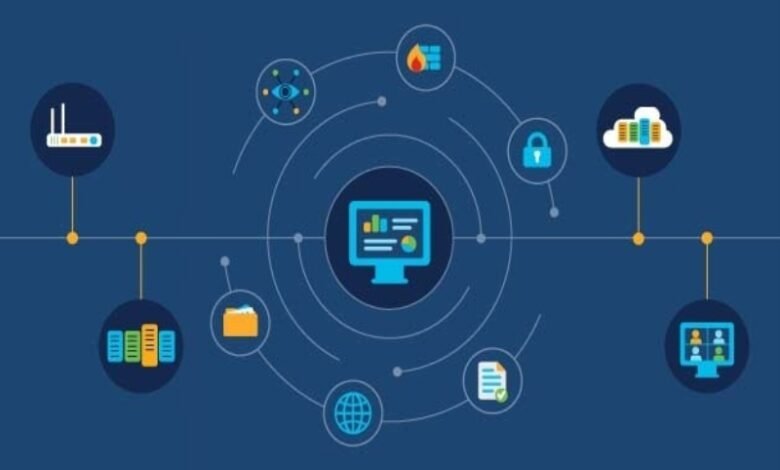Leveraging ICMP for Troubleshooting: Maximizing Network Performance

Key Takeaways
- ICMP is essential for network troubleshooting and performance insights.
- Understand common use cases and best practices for ICMP deployment.
- Learn how ICMP can help identify and resolve network issues.
- Discover tools and techniques for monitoring ICMP traffic effectively.
What Is ICMP?
The Internet Control Message Protocol (ICMP) is a fundamental part of the Internet Protocol Suite used for error handling and diagnostics. ICMP enables devices within a network to share critical error information and operational status, ensuring smoother communication and troubleshooting. This protocol, as described on ICMP, is crucial for maintaining the health of computer networks. ICMP messages are instrumental in conveying information back to the sender about errors or issues encountered while transmitting data. As such, ICMP forms the backbone of effective and efficient network communications, highlighting its indispensable role in ensuring uninterrupted data flow.
Role of ICMP in Networking
ICMP plays a pivotal role in maintaining network performance. It helps identify connectivity issues by sending error messages if a data packet fails to reach its destination. Additionally, ICMP is essential for network devices to confirm whether data is being successfully routed. This protocol aids in quickly tracing faults and ensuring efficient network communication. For example, when a data packet goes astray, ICMP steps in to notify the sender about the issue, enabling network administrators to address the problem promptly. This ensures that any potential disruptions are minimized, thereby maintaining the overall network efficiency and performance. The role of ICMP extends beyond simple error messages, as it also supports the continuous monitoring and troubleshooting essential for modern, dynamic networks.
Common ICMP Messages
- Echo Request and Reply: Used by the Ping utility to test connectivity between devices. This is one of the most common uses of ICMP, where an Echo Request is sent to a network device, and a corresponding Echo Reply is received. This simple yet effective test helps in verifying active connections and measuring the round-trip time for packets, which is critical for diagnosing network delays and disruptions.
- Destination Unreachable: Alerts that a particular destination cannot be reached. This ICMP message is crucial for identifying routing issues where a packet cannot find its intended recipient. The message specifies the type of problem, such as network, host, protocol, or port unreachable, aiding network engineers in pinpointing the exact cause of the failure.
- Time Exceeded: Indicates that the packet’s time to live (TTL) has expired. This message is crucial for tracing routes using tools like Traceroute. When packets fail to reach their destination within the specified TTL, ICMP sends back a Time Exceeded message, helping to map out the path and identify any bottlenecks causing delays.
- Redirect: Suggests alternative routes for data packets. This ICMP message informs hosts of more efficient routes to a destination, optimizing network traffic flow. By enabling dynamic route adjustments, ICMP Redirect helps maintain optimal network performance and reduces latency.
ICMP Tools and Techniques
A variety of network tools utilize ICMP to monitor and diagnose network performance. These range from essential utilities like Ping to more advanced network monitoring solutions. By using these tools, network administrators can gain valuable insights into latency, packet loss, and routing paths, which are critical metrics for maintaining an optimal network. For example, the Traceroute utility uses ICMP Time Exceeded messages to identify each hop along the packet’s journey, providing a detailed map of the network path. Advanced monitoring tools aggregate ICMP data to present a comprehensive view of network health, enabling proactive management and swift issue resolution.
Additionally, some modern network management solutions offer real-time visualization of ICMP data, allowing administrators to see instant changes in network conditions. Techniques such as continuous ping tests and automated alerting systems based on ICMP responses further enhance the ability to maintain optimal network performance and reliability.
Best Practices for ICMP
- Controlled Use of ICMP: Limit ICMP traffic to essential diagnostics to avoid unnecessary network overhead. Excessive ICMP traffic can lead to network congestion and reduced performance. Thus, it is essential to filter out non-essential ICMP messages and focus on critical diagnostics to maintain network efficiency.
- Security Considerations: Implement filters to protect against ICMP-based attacks and potential misuse. ICMP can be exploited for network scanning and DoS attacks, so configuring firewalls and routers to handle ICMP traffic securely is vital. Network administrators should employ rate limiting and anomaly detection to safeguard against such threats while allowing legitimate diagnostic traffic.
- Regular Monitoring: Continuously track ICMP traffic to identify and resolve issues promptly. Automated monitoring systems that utilize ICMP data can provide a more stable network environment by warning administrators of any problems before they get out of hand. Regular ICMP checks also help maintain up-to-date network configurations, identify outdated routes, and ensure optimal routing paths.
Real-Life Examples of ICMP in Action
Consider a scenario where a large corporation experiences intermittent connectivity issues across its global offices. Ne work administrators leverage ICMP protocols to pinpoint the exact location and nature of the fault. By using the data provided by ICMP, they quickly identify a misconfigured router and rectify the issue, restoring seamless communication. This practical use demonstrates how vital ICMP is in diagnosing and resolving network anomalies efficiently, ensuring minimal downtime and business continuity.
Another example is during a network upgrade. By employing ICMP-based tools, administrators can continuously monitor the health of the network before, during, and after the upgrade. This guarantees a smooth transfer to the new infrastructure and little downtime. We have real-time network performance visibility made possible by ICMP tools, changes may be made quickly, and the new configuration can be guaranteed to match the required performance benchmarks.
Read More: Alex Fine Net Worth and Early Life




